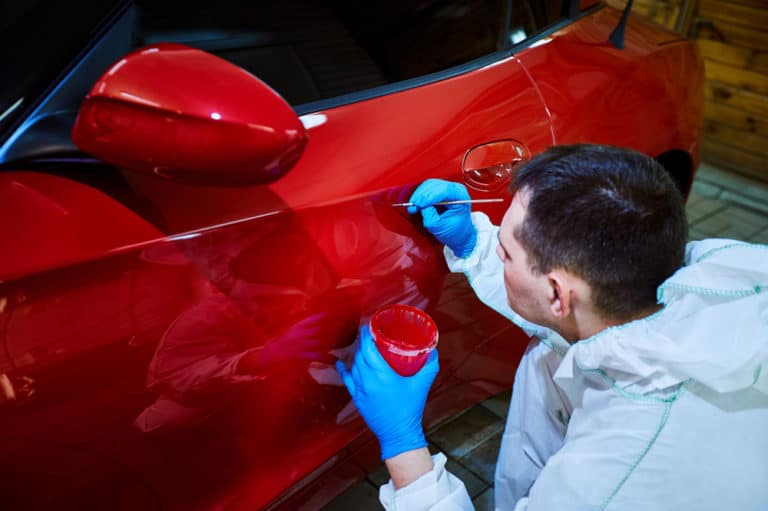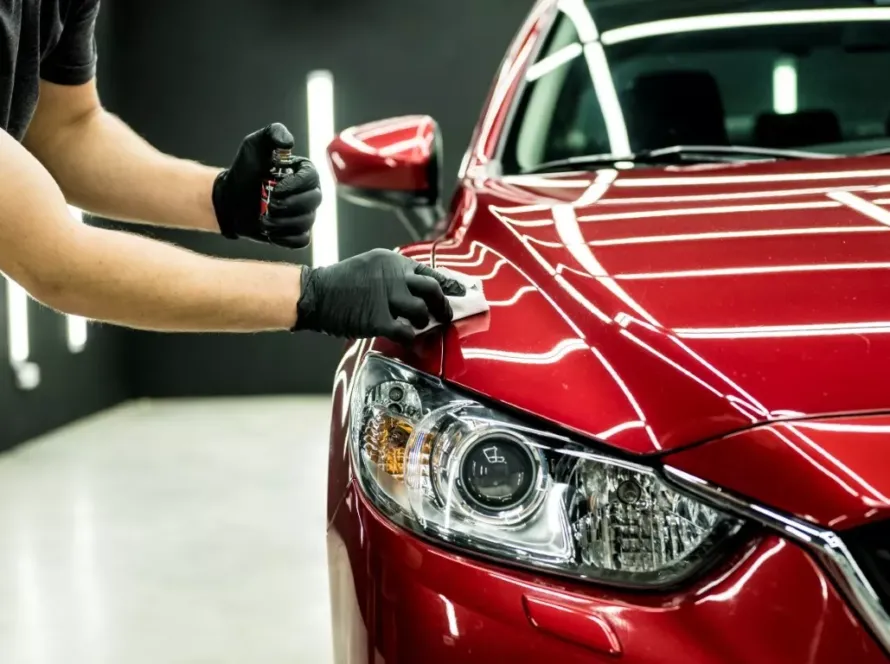Paint Defects 101: From Oxidation to Water Spots
Even the best-maintained cars eventually show signs of paint defects. From faint swirl marks to chalky oxidation, these imperfections dull the finish and reduce the value of your vehicle. Understanding the most common paint defects — and how to fix them — is the first step toward keeping your car looking showroom fresh.
A detailing industry study found that over 80% of visible paint defects are caused by improper washing and environmental exposure, which means most are preventable with the right care.
Common Types of Paint Defects
1. Swirl Marks
Fine, circular scratches caused by dirty sponges, towels, or automatic car washes. They scatter light and reduce gloss.
2. Oxidation
Paint fading or chalkiness caused by UV exposure and oxygen breaking down the clear coat.
3. Water Spots
Mineral deposits left after water evaporates, often etched into clear coat if not removed quickly.
4. Micro-Marring
Ultra-fine scratches caused by aggressive polishing or contaminated pads. Looks like haze under strong lighting.
5. Scratches
Can range from surface-level clear coat scratches to deeper marks that reach the base coat or primer.
6. Holograms
Machine-induced streaks left behind by improper rotary polishing. Visible under sunlight or LEDs.
Why Paint Defects Matter
- Appearance: Defects dull paint and make cars look older.
- Value: A defect-free finish increases resale appeal and buyer confidence.
- Longevity: Left untreated, defects can trap dirt and accelerate further paint damage.
- Protection: Correcting defects ensures coatings and films bond properly to the surface.
How to Fix Paint Defects
- Paint Correction: Safely removes swirl marks, micro-marring, oxidation, and holograms.
- Polishing: Refines paint and improves gloss after compounding.
- Protective Coatings: Wax, sealant, or ceramic coating prevent new defects.
- Prevention: Proper washing techniques (two-bucket method, microfiber towels) reduce future damage.
Frequently Asked Questions (FAQ)
What are the most common car paint defects?
Swirl marks, oxidation, water spots, scratches, holograms, and micro-marring are the most common.
What causes oxidation on car paint?
Oxidation is caused by UV rays and oxygen breaking down the clear coat, leaving paint dull and chalky.
How do I remove water spots from car paint?
Light spots can be removed with detailing sprays. Etched spots often require polishing or paint correction.
Can swirl marks be removed permanently?
Yes. Professional paint correction permanently removes swirl marks by leveling the clear coat.
What is the difference between scratches and swirl marks?
Swirls are clusters of fine micro-scratches, while scratches are deeper single marks that may reach the base coat.
How do I know if my car has holograms?
Check under direct sunlight or LED lights. Holograms appear as cloudy, streak-like marks left by improper polishing.
Can paint defects lower car resale value?
Yes. Cars with dull, scratched finishes often sell for less, while corrected finishes can increase trade-in value.
Are all paint defects fixable?
Surface-level defects can be corrected. Deep scratches through the clear coat may require repainting.
How do I prevent new paint defects?
Wash with microfiber mitts, use the two-bucket method, and protect paint with wax or ceramic coatings.
Does every car eventually get paint defects?
Yes. All cars are exposed to the environment, but proper care and protection greatly reduce the severity.




